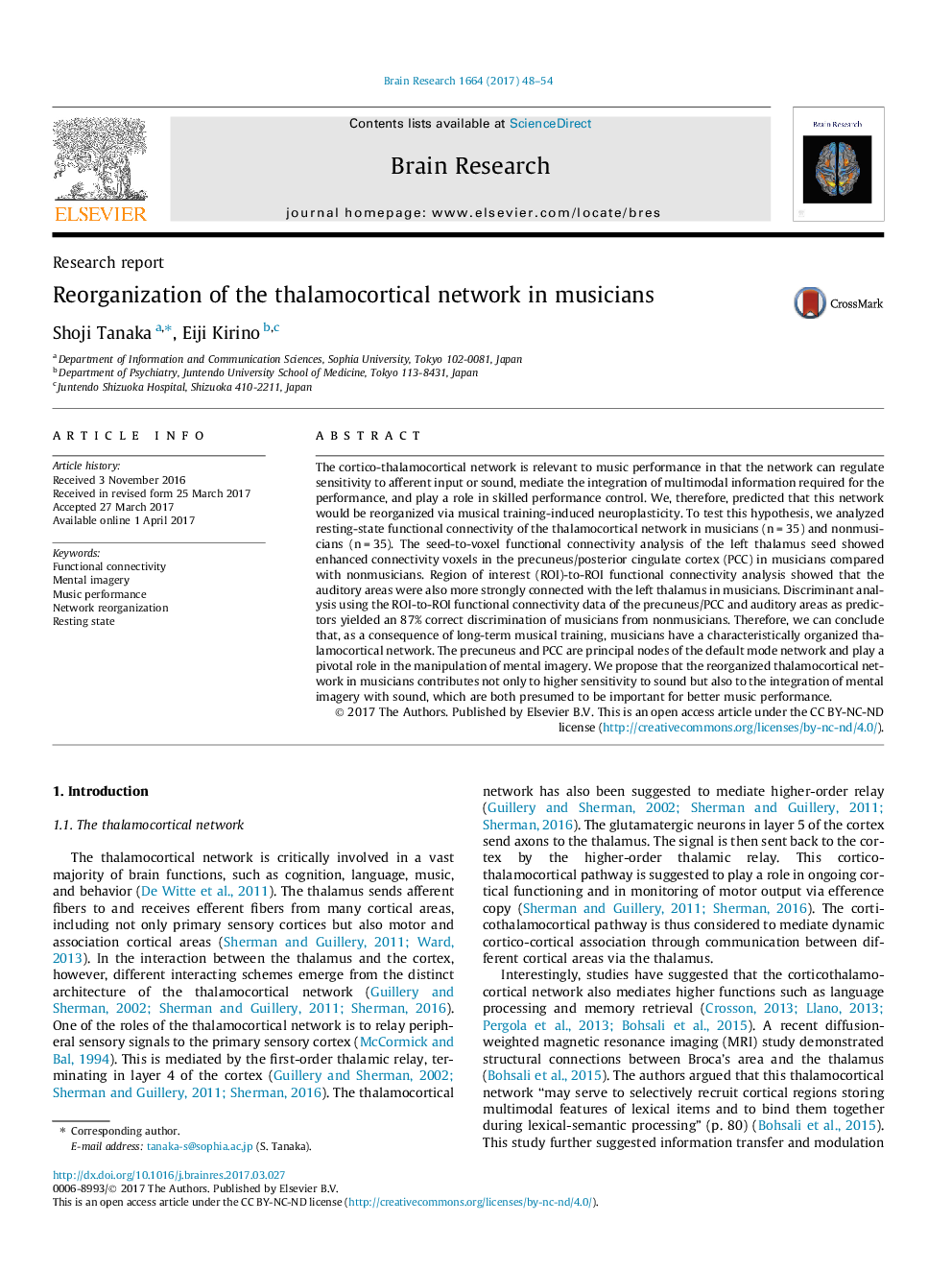ترجمه فارسی عنوان مقاله
تنظیم مجدد شبکه تالاموکورتیک در نوازندگان
عنوان انگلیسی
Reorganization of the thalamocortical network in musicians
| کد مقاله | سال انتشار | تعداد صفحات مقاله انگلیسی |
|---|---|---|
| 161469 | 2017 | 7 صفحه PDF |
منبع

Publisher : Elsevier - Science Direct (الزویر - ساینس دایرکت)
Journal : Brain Research, Volume 1664, 1 June 2017, Pages 48-54
ترجمه کلمات کلیدی
اتصال به عملکرد تصورات ذهنی، اجرای موسیقی، سازماندهی مجدد شبکه، حالت استراحت،
کلمات کلیدی انگلیسی
Functional connectivity; Mental imagery; Music performance; Network reorganization; Resting state;

